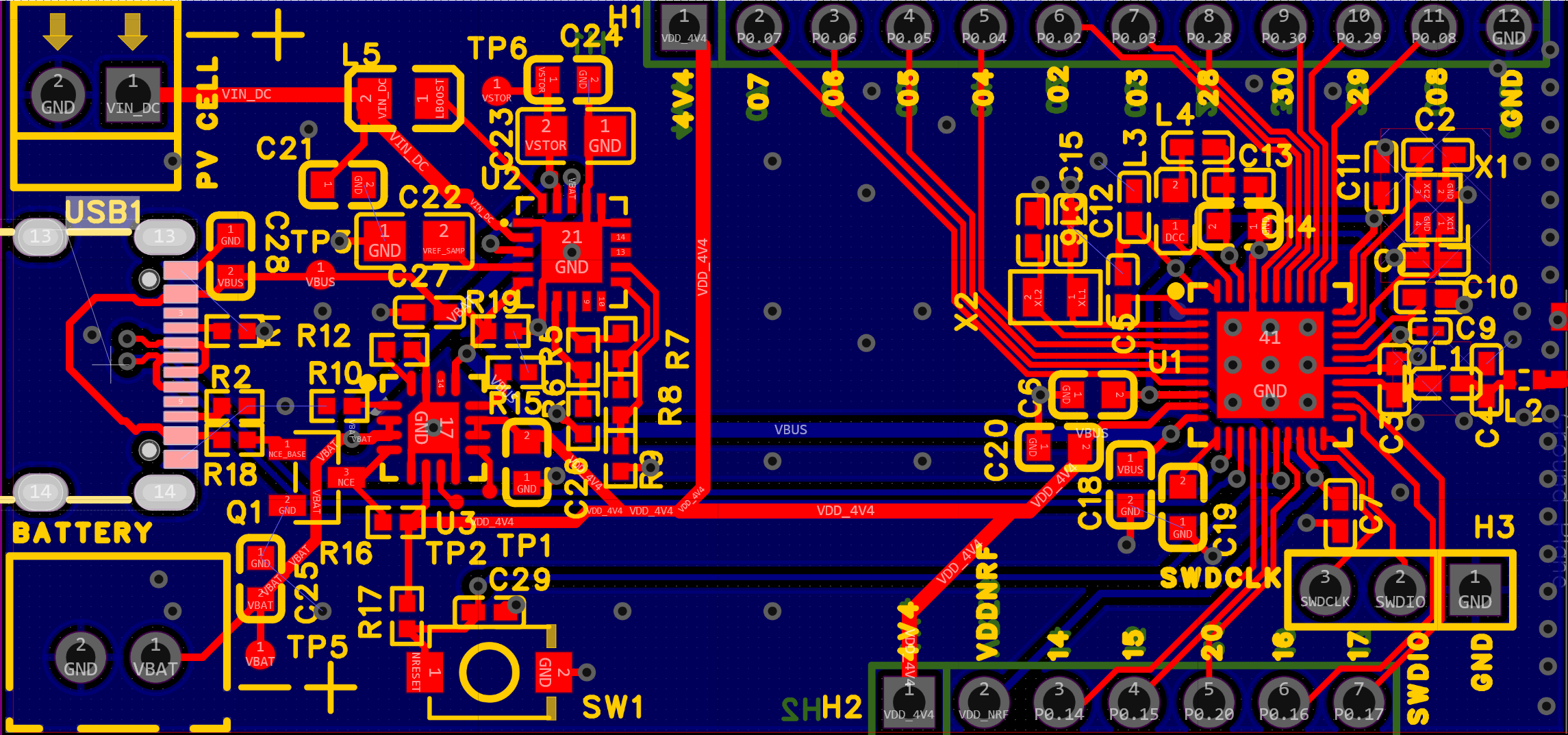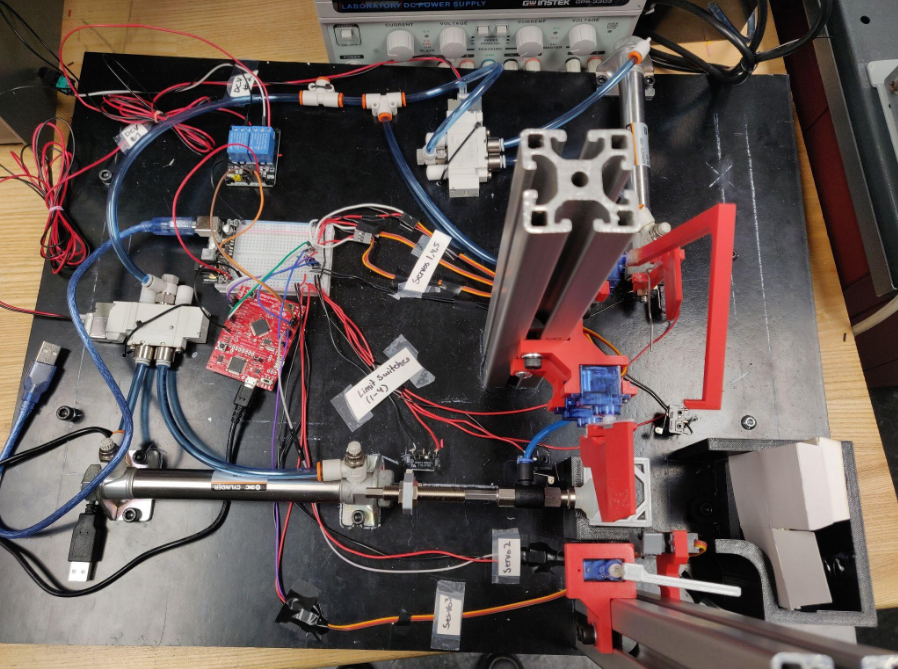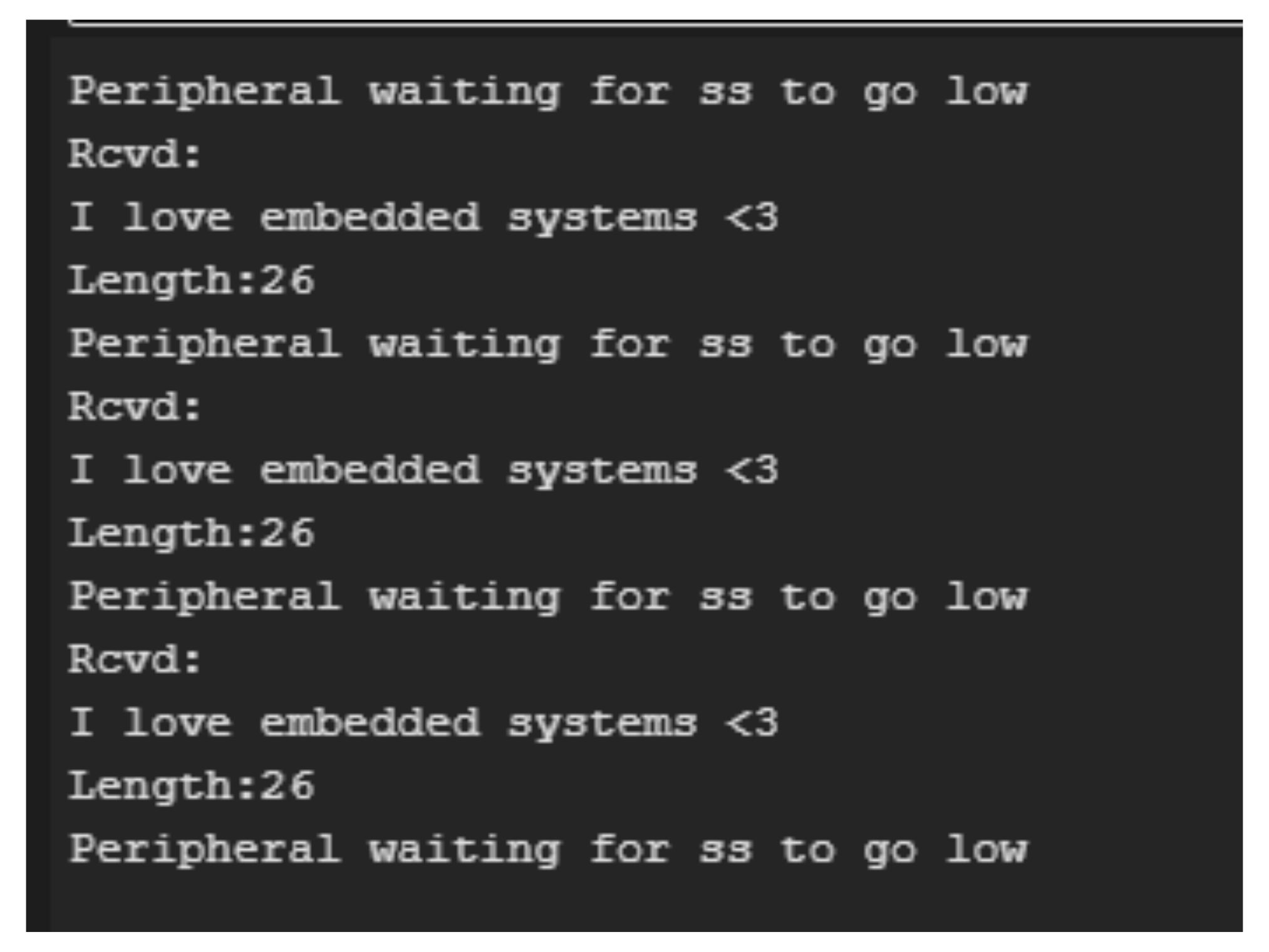Energy Harvesting IOT Development Board
Introduction
This project is a custom prototyping board designed for low-energy, energy-harvesting wireless IoT applications. At its core, it combines the Nordic nRF52820 microcontroller with the Texas Instruments BQ25505 energy harvesting IC, creating a platform that can stay operational even in energy-limited environments.
Features
This design features ultra low-power energy harvesting and battery charging thanks to the BQ25505. Using the screw-terminal, the user can connect a low impedence energy harvesting device such as a photovoltaic (PV) cell, thermoelectric generator, or piezoelectric energy source. In its current state, the hardware is configured to most optimally support PV cells, however in future versions it may be possible to change the configuration using jumpers to optimize it for a different application. It is also possible to power the device and charge the battery using the USB-C port.
The 64MHz nRF52820 offers a variety of communication interfaces and peripherals for programming your application, and even includes 2.4GHz wireless communication using the on-board PCB antenna for data rates up to 2Mbps. Features include:
- Bluetooth mesh/BLE
- Full-speed(12Mbps) USB 2.0
- Zigbee
- Thread
- 2x I2C master/slave
- 2x SPI master/slave
- UART
- 128-bit AES Encryption Co-processor
- Quadrature Decoding
Along with many other interesting features which can be seen in detail here. For external I/O the board exposes the 15 remaining digital pins of the nRF52820, 4 of which can be configured for analog input.
Hardware Design
The design goal for this device was to operate indefinitely in energy limited environments, even using only ambient energy like indoor lighting to get the power it needs.
This being the case, I aimed to strike a balance between cost-effectiveness, features, and efficiency when selecting components for this project.
I initially considered using an ESP32-C3 given their availability, extensive support, and ease of use. However, with transmissions drawing up to 335mA, it became clear that it wasnt up for the challenge. After a bit of research I remembered a recent video I had seen about Nordic microcontrollers and their incredible energy efficiency. Another video showcasing someone achieving barely 600 MICRO amps of (average) current draw even with intermittent RF activity made the decision a no-brainer.
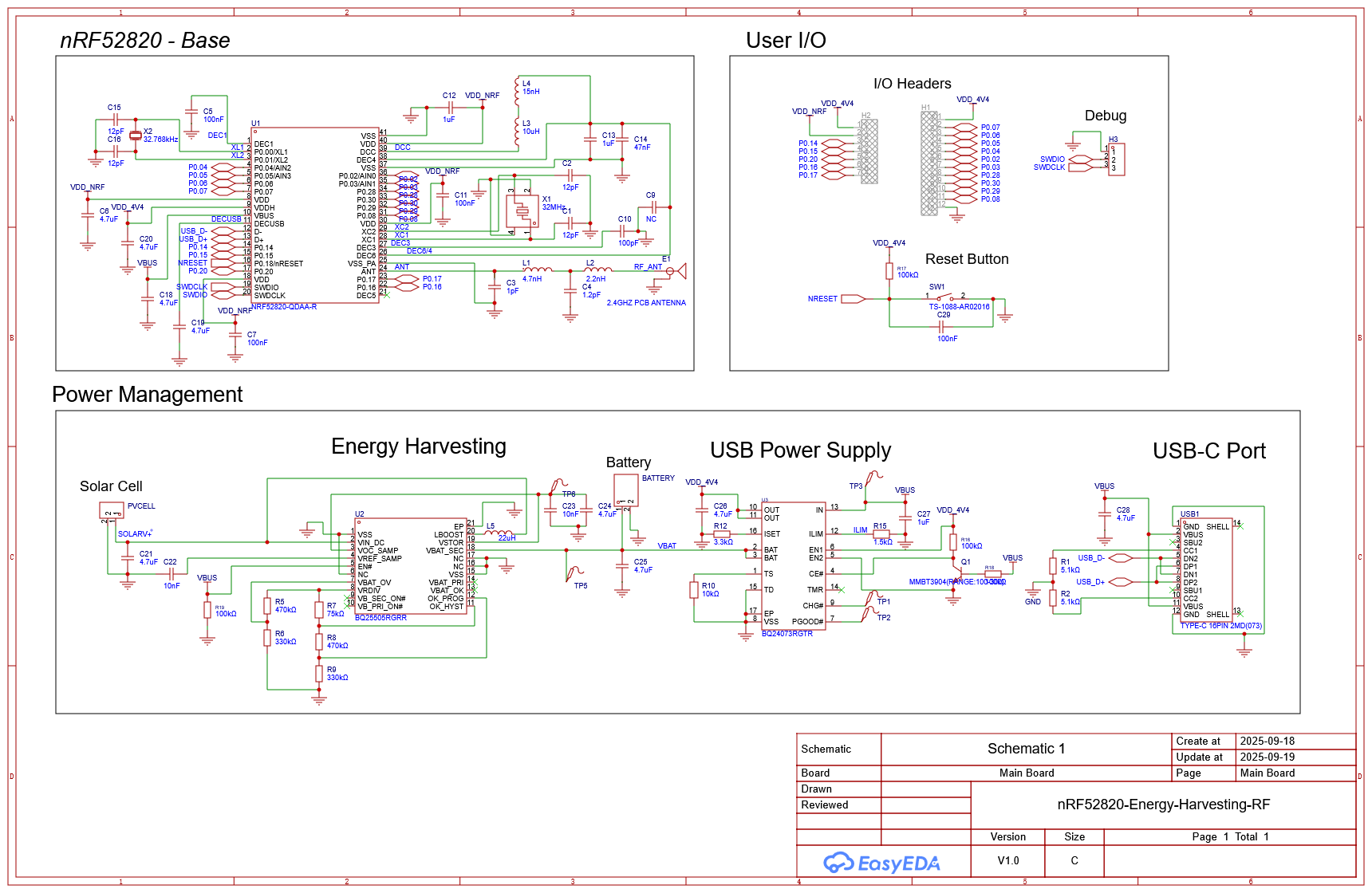
I chose nRF52 over the newer nRF54 due to their availability and slight price advantage. Among the nRF52 series, the nRF52820 offers a great featureset including the USB interface, improved power management, and more memory than lower tiers, at a lower price than the higher tiers.
I followed the same philosophy to choose the BQ25505 and BQ24073. Each one is a highly efficient tool for the job
For the form factor, the pin headers are spaced to fit across a standard breadboard, similar to a Raspberry Pi Pico. This makes it easy to prototype circuits and quickly test external sensors or modules.
This is my first PCB design, and I threw myself into the deep end with RF. The design isn’t perfect, but every iteration has been a valuable learning step.
I’m 3D!
Firmware
By default, the board must be programmed over the Serial Wire Debug (SWD) interface. For convenience, my first goal for firmware development is to implement a custom bootloader that will allow me to flash programs over USB.
Future Plans
Some of the improvements I’d like to explore:
- Selectable configuration for non-PV sources (thermoelectric, piezoelectric)
- Optimizing RF performance for maximum efficiency
- Field-testing with real-world IoT use cases (e.g., indoor environmental sensing)
Closing Thoughts
This project represents both a challenge and a milestone for me. Taking on RF and energy harvesting on my first PCB has been ambitious, but rewarding. While the design has plenty of room for improvement, it already demonstrates the viability of energy-harvesting IoT hardware built from affordable, widely available components. Most importantly, it reflects the intersection of two of my core interests: embedded systems and sustainable energy, areas I’m excited to keep pushing further.
